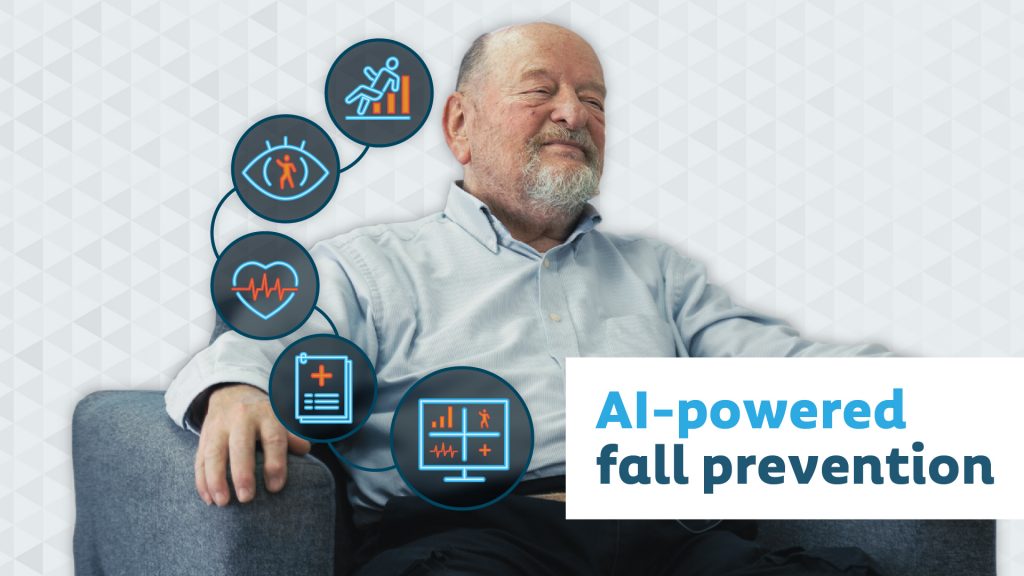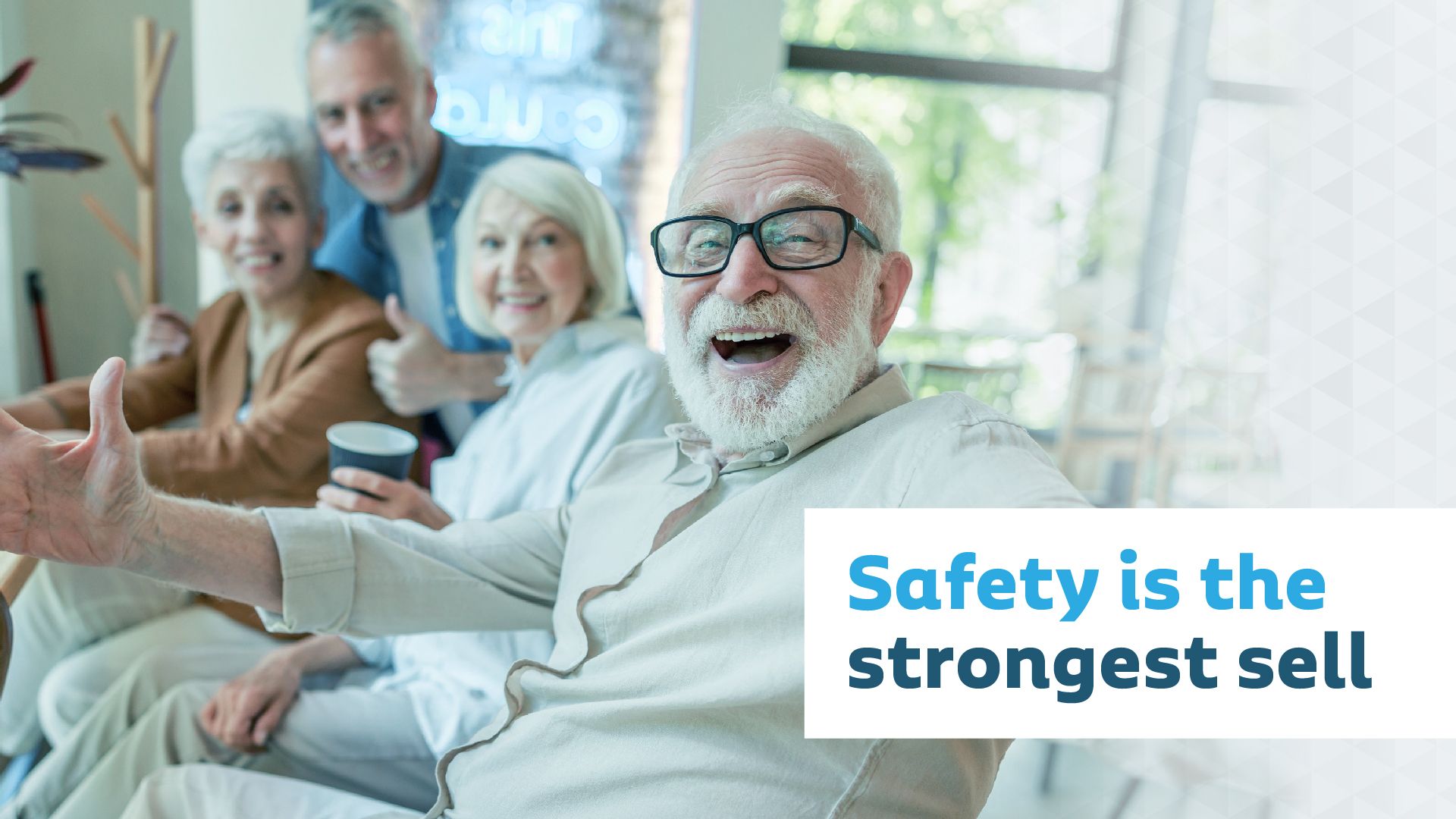Main Menu
Posted by Vayyar Care
May 12, 2024Innovations in elderly care: the 3 pillars of AI fall prevention

Artificial Intelligence is on the verge of revolutionizing fall prevention in elderly care. Just as AI has already transformed multiple industries, not to mention the internet, the power of machine learning is now enabling caregivers to make proactive fall interventions and deliver new levels of personalized care.
How can AI prevent falls in the elderly?
AI – or machine learning – is all about pattern recognition. An AI fall prevention system is trained to study the various risk factors that contribute to falls, becoming more accurate over time. As in other fields, fall reduction AI in elderly care depends on high-quality data. And the most reliable data is often the simplest.
- Fall management: one fall leads to another
By far the best indicator of fall risk is a history of falling. In fact, falling once doubles the likelihood of falling again.
However, an estimated 50% of seniors fail to report minor falls. Some forget, while others fear of losing more of their independence. This leaves caregivers in the dark about their actual fall risk and unable to take the right fall prevention measures.
That’s why advanced sensor technologies are now being deployed to provide automatic fall detection. By identifying and logging falls of all levels of severity, care providers can see residents’ complete fall histories – including unreported falls – to highlight the highest-risk individuals, and act accordingly.
But a resident’s fall history is only part of their overall risk profile.
2. Elderly activity monitoring: analyzing activity
A resident’s level of fall risk is closely connected to whether they can perform Activities of Daily Living, some of which can also be monitored by next-generation, multifunctional fall detection sensors.
Physical mobility
Getting in and out of a bed or chair, walking, and using the bathroom are three of the basic physical functions that indicate an older adult’s ability to live with a reasonable degree of independence, even in a long-term care setting.
In an assisted living facility, caregivers need a way to monitor how easily a resident can get around their apartment. This is, paradoxically, both their safe space and the place where they’re most vulnerable. Falling alone, between room checks by caregivers, can lead to a long lie, with potentially devastating consequences.
However, the link between mobility and fall risk is complicated. On the one hand, reduced mobility usually points toward physical frailty, muscle wastage, and fear of falling. Conversely, fall risk inevitably increases when an older adult is moving around. Falls from a bed or chair are common, of course, but they’re much less likely to result in serious injury.
By leveraging AI for elderly mobility tracking, care technology providers can identify irregularities that could indicate a higher risk of falling. It’s all about measuring baseline levels of in-room activity and highlighting significant increases or decreases.
As the capabilities of leading sensor technologies increase, care providers may even be able to automate fall risk assessments. Timed Up and Go tests and other methods of gait analysis in seniors are currently carried out only periodically. But constant evaluation of a resident’s mobility is now on the near horizon. What’s more, this will overcome the problem of subject bias: a resident under assessment trying to move more quickly than they would naturally.
Bathroom usage
Urinary tract infections are a well-known fall risk factor for seniors. They often cause low blood pressure, dizziness, drowsiness, decreased appetite, and incontinence, all of which can lead to balance issues.
What’s more, urinary incontinence and nocturia, dramatically increase fall risk. This stands to reason. Rushing to the bathroom, particularly in low light, is inevitably going to results in slips and trips.
That’s why data that reveals residents’ total bathroom usage is so valuable.
Social engagement
Loneliness isn’t just a threat to seniors’ mental health. Social isolation and resulting depression increase fall risk by 55% for seniors with any two risk factors. For those with three to four risk factors, it pushes up risk by 144%.
By tracking how long residents spend alone in their apartments, clinical directors can identify those who may be prone to social isolation and its attendant health risks.
And conditions such as these are by no means the only illnesses that can increase fall risk.
3. Electronic health records: the bigger picture
As the care sector continues its journey of digital transformation, a key goal is convergence between residents’ medical files and up-to-the-minute data that shows their health and wellbeing.
A resident’s history of illness and courses of medication, as well as more general data related to their age, gender, ethnicity, and work history can provide precious insights into the ongoing risks they face.
That’s why connected care platforms that focus on fall risk assessment and mitigation need to be integrated with the most robust EHR systems.
In fact, data integration is right at the heart of AI fall prevention.
AI in fall prevention: the state of the art
Reliable, multifaceted fall risk data underpins AI fall prevention strategies. Leveraging unprecedented computational power, fall prediction algorithms can analyze the relationships and interdependencies between large and disparate data sets. This allows them to generate accurate and actionable fall risk scores that enable care providers to achieve exceptional outcomes.
To learn more about how Vayyar Care is creating the care industry’s most robust AI fall prevention system, email [email protected]
The Post URL was successfully copied to your clipboard
Read more on #elderly care

08 October 2024
Recruit, reinforce, and retain should be the mantra of any hiring manager.…
Read more
05 August 2024
We’re living longer, not healthier. Over 95% of people aged 65 or…
Read more
17 June 2024
Senior living occupancy has recovered from the perfect storm it weathered in…
Read more


